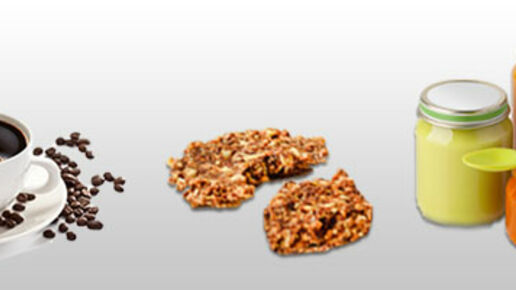Furan in food – EFSA confirms health concerns

Consumer exposure Concentration or amount of a particular substance that is taken in by an individual, population or ecosystem in a specific frequency over a certain amount of time. to furan and methylfurans in food could lead to possible long-term liver damage. The most exposed group of people are infants, mainly through consumption of ready-to-eat jarred or canned foods. Exposure in other population Community of humans, animals or plants from the same species. groups is mainly from consumption of grain-based foods and coffee, depending on age and consumer habits.
Furan and the related compounds 2- and 3-methylfurans are chemical contaminants that naturally form during heated food processing, including cooking. These substances have always been present in cooked or heated foods.
Potential health risks linked to furan
EFSA carried out this assessment following its monitoring of furan levels in food and assessing consumer exposure. Dr Helle Knutsen, Chair of the expert Panel on Contaminants in the Food Chain, said: “Based on animal studies we concluded that liver damage and liver cancer are the most critical health effects.”
Dr Knutsen added: “How furan might cause cancer in animals is not fully understood. Since the panel could not rule out that this may be due to a direct interaction with DNA A complex chain-like molecule that carries the genetic material, present in living organisms and some viruses. DNA (deoxyribonucleic acid) is capable of copying itself and carries the instructions for all the proteins used to create and sustain life., we were not able to set a safe level – the tolerable daily intake An estimate of the amount of a substance in food or drinking water which is not added deliberately (e.g contaminants) and which can be consumed over a lifetime without presenting an appreciable risk to health. . Instead we calculated a ‘ margin of exposure A tool used in risk assessment to explore safety concerns arising from the presence of a potentially toxic substance in food or animal feed.’.
“As did the Joint FAO/WHO Expert Committee on Food Additives [JECFA], we concluded that the level of exposure to furan in food indicates a human health concern.”
The most exposed consumers
Although the average intake The amount of a substance (e.g. nutrient or chemical) that is ingested by a person or animal via the diet. of foods containing furan indicates a low health concern for most consumers, for high consumers exposure is up to three times what would be considered of low concern for public health.
Dietary exposure For the purposes of risk assessment, measurement of the amount of a substance consumed by a person or animal in their diet that is intentionally added or unintentionally present (e.g. a nutrient, additive or pesticide). is higher when also taking 2- and 3-methylfuran into account; for example levels of 2-methylfuran in coffee can be four times higher than furan.
There are some knowledge gaps about the toxicity The potential of a substance to cause harm to a living organism. of furan and methylfurans and about exposure to them. However, taking these uncertainties into account, EFSA’s experts were more likely to have overestimated the health risk than underestimated it.
Reducing furan exposure
Furans form from a variety of substances naturally present in food, including vitamin Dietary substance needed in very small amounts to support normal growth and maintenance of health in humans and animals. Most vitamins are 'essential' as they are not made within the body. C, carbohydrates A family of nutritional substances that includes sugars, starches and fibres., amino acids, unsaturated fatty acids and carotenoids. The cooking/processing conditions help determine how much furan is formed and lost (mainly via evaporation), and how much is present when food is consumed.
Dr Knutsen said: “Our opinion describes how cooking practices could reduce dietary exposure to furan and methylfurans, bearing in mind that consumers are exposed to them in a variety of foods.”
For example due to the volatility of furan, re-heating ready-to-eat meals for infants and young children in a hot water bath without a lid may reduce their exposure by about 15-30%.
Different preparation methods for coffee result in different losses of furan concentrations. The losses in boiled/Turkish coffee are 3 to 4 times greater than in filter coffee and espresso.
The level of furan in toast increases with toasting time and with the degree of browning, albeit toast is a less important contributor to overall furan exposure.
What happens next?
EFSA’s scientific advice will help EU and national decision-makers to decide whether further action is needed.
How to contact us
EFSA Media Relations Office
Tel. +39 0521 036 149
E-mail: press [at] efsa.europa.eu (Press[at]efsa[dot]europa[dot]eu)
(Only if you are a member of the press)
Ask a Question Service
You have a question about EFSA’s work? Contact our Ask a Question service!